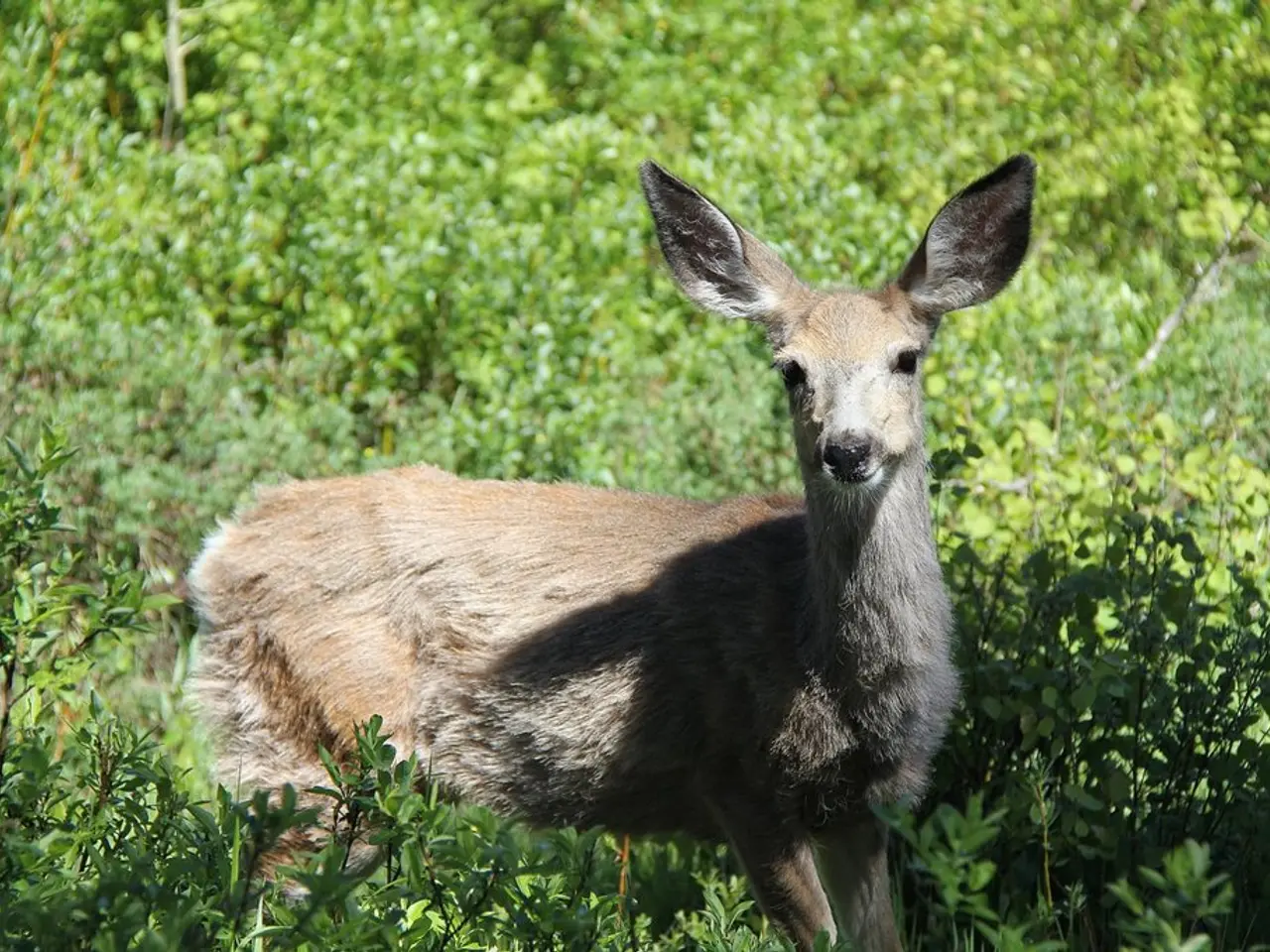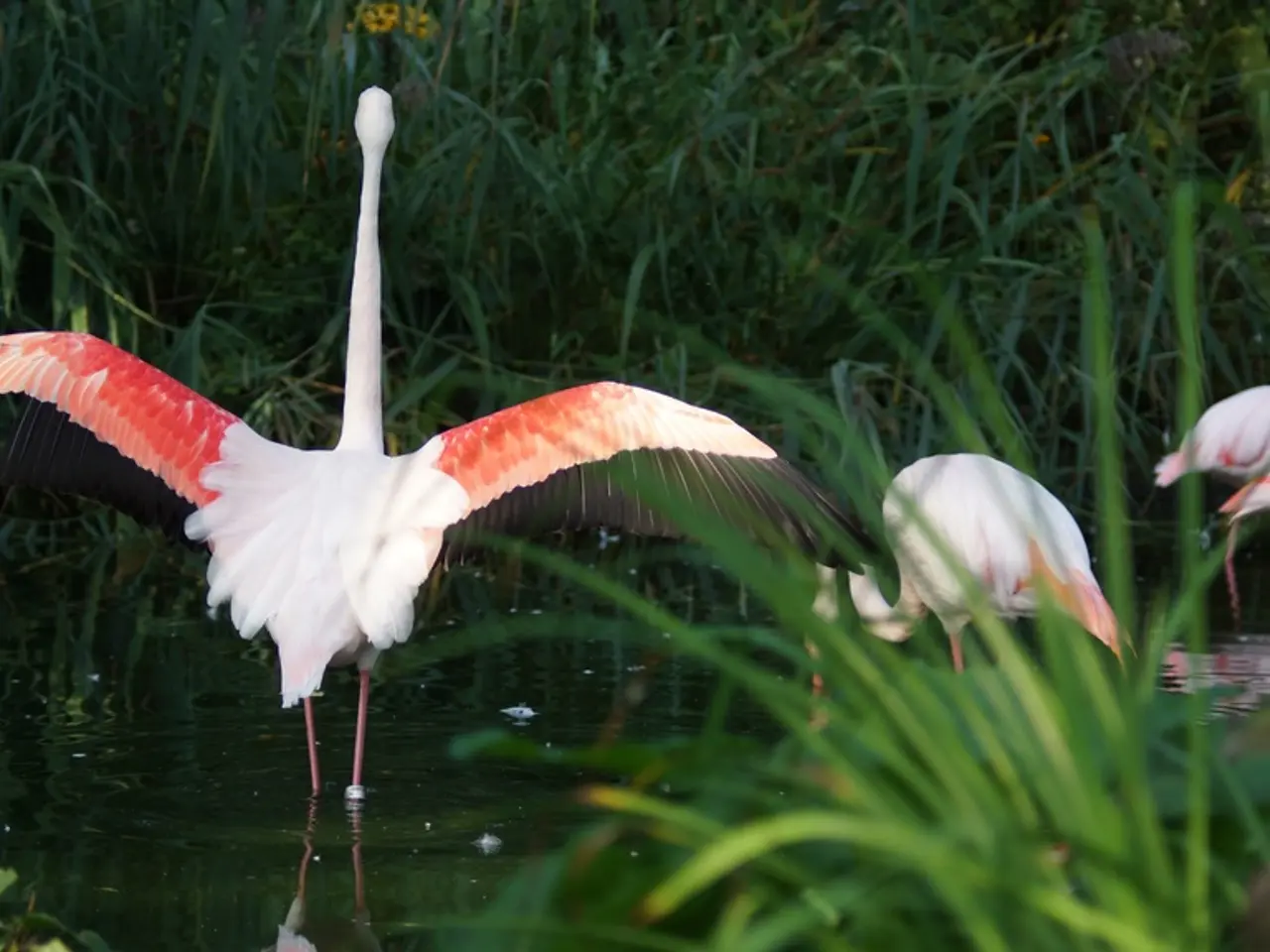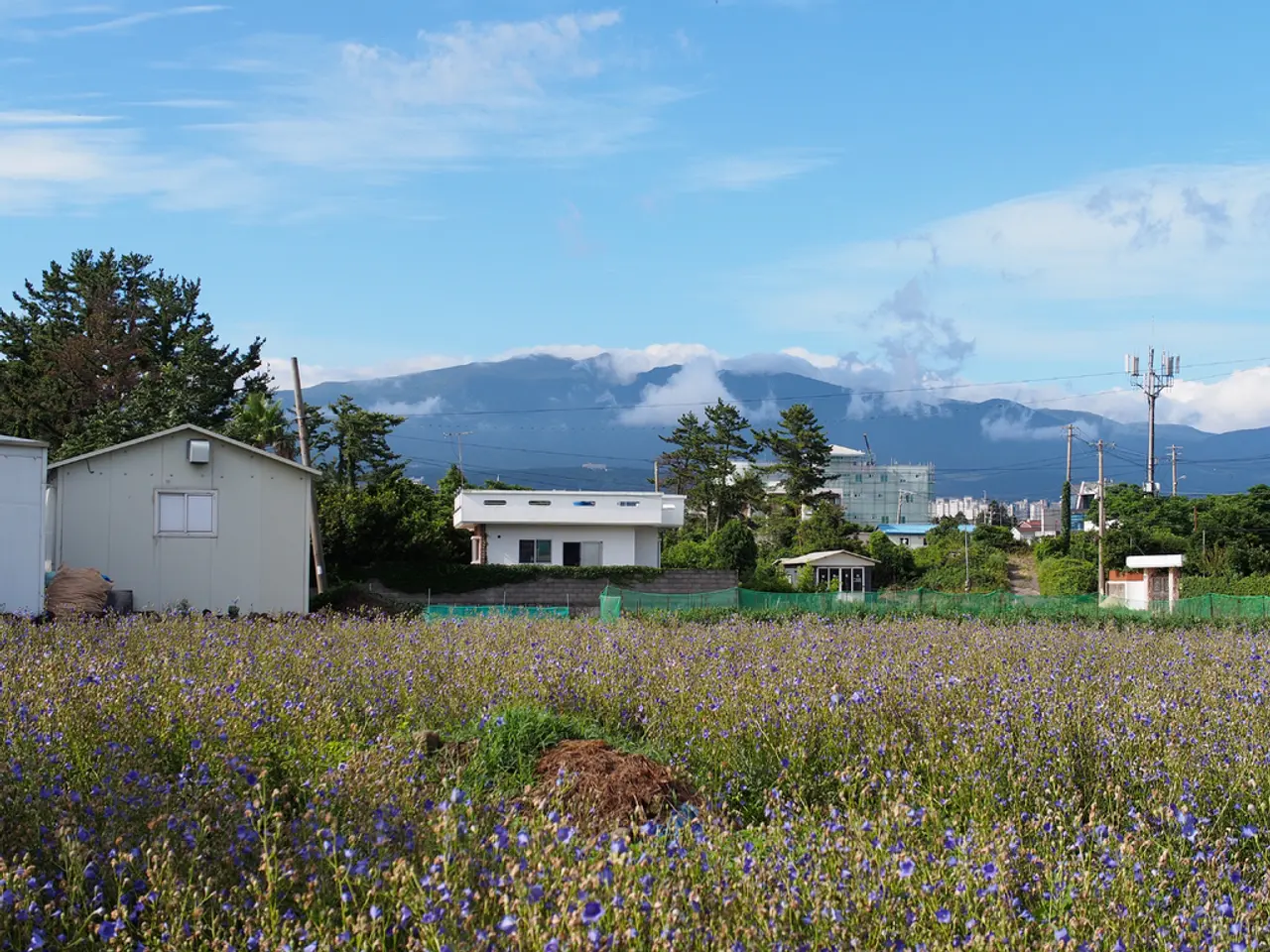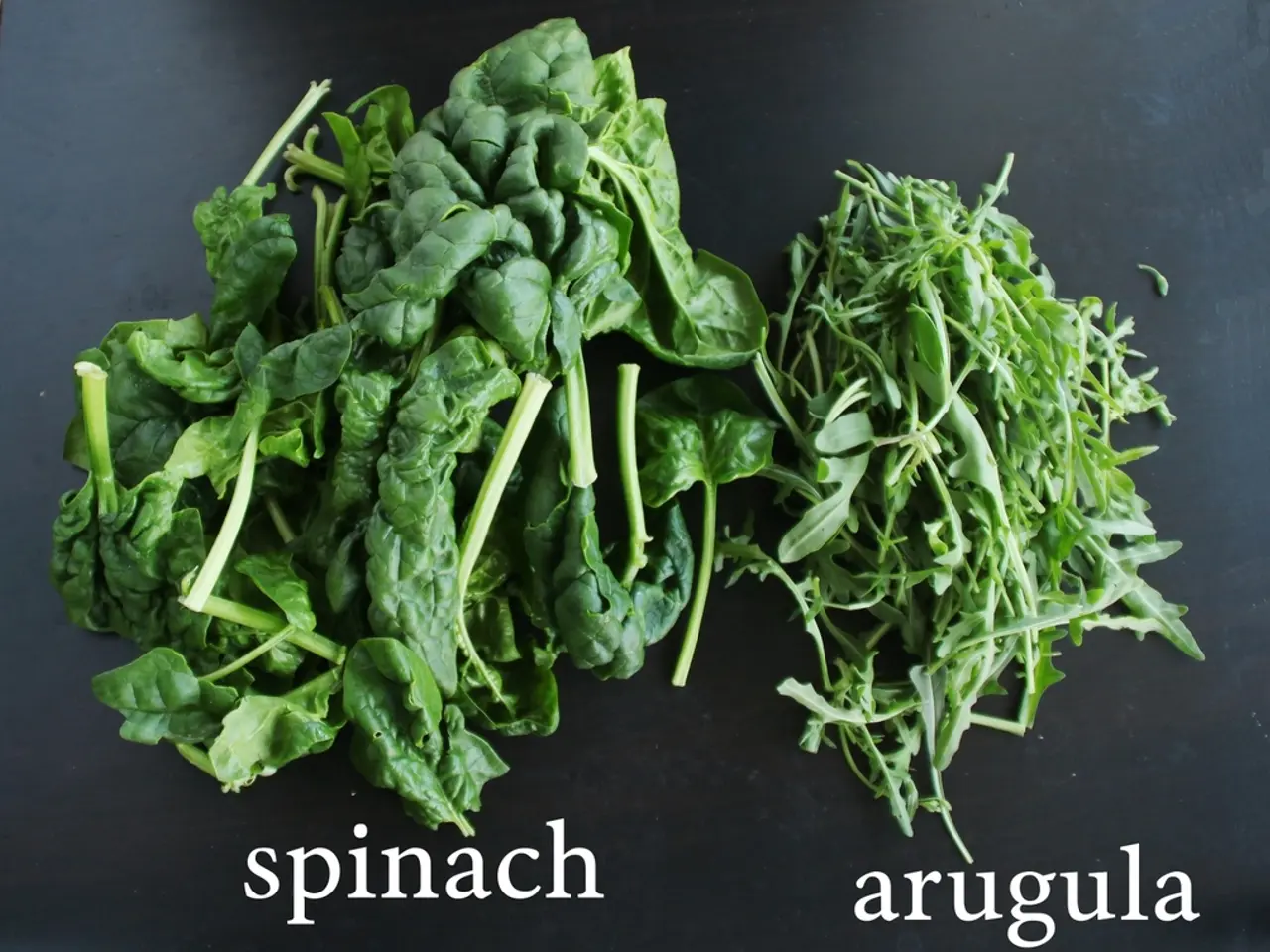Identify Deer: A Comprehensive Guide to Distinguishing Doe and Roe Deer Permanently!
Roe deer and does, the female counterparts of the red deer, may share a common habitat and diet, but they exhibit distinct physical characteristics and behaviours that set them apart. These differences highlight the diversity within the cervid family.
### Physical Characteristics
The roe deer, encompassing two species - European (Capreolus capreolus) and Siberian roe deer (C. pygargus) - boast a coat that changes colour seasonally. In summer, their coats are a reddish-brown hue, transitioning to a grayish-brown in winter for better camouflage. A distinctive white rump patch is a defining feature. European roe deer stand about 66–86 cm at the shoulder, with a weight rarely exceeding 30 kg, while their Siberian counterparts are larger, typically weighing around 50 kg.
Sex-specific traits are evident in the physical differences between males (roebucks) and females (does). Males sport short, usually three-tined antlers that grow in winter and shed velvet by March, making them territorial. Females, on the other hand, do not have antlers. During certain periods, males may show slight fattening, while both sexes have a small or almost absent tail.
### Behaviours
Male roe deer become territorial in March, preparing for the breeding season in late summer. They shed the velvet from their antlers in preparation for territorial battles and primarily court yearling females to bond them to their territory. Antler growth occurs in winter, distinguishing roe deer from many other deer species.
Females, on the other hand, are nurturing creatures. They carry and birth 2-3 spotted fawns and disperse young roe deer from their territory as they mature. Does do not exhibit any territorial or antler-related behaviours.
### Habitats
Roe deer are widespread across Eurasia, with the European species inhabiting woodlands, bushy areas, and farmland, and the Siberian species preferring a mix of forests and open grasslands. They are well-adapted to cold environments, ranging from northern Europe/Asia to high mountains and southern regions like Spain.
Does and bucks share the same habitats, with yearlings dispersing to find their own living spaces. They tend to inhabit woodlands and forest edges, often near human settlements where food is accessible.
### A Closer Look at the Differences
A summary table illustrates the key differences between roe bucks and does:
| Aspect | Roe Buck (Male) | Doe (Female) | |------------------|--------------------------------------|-----------------------------------| | Antlers | Short, usually three-tined, grown in winter | No antlers | | Size | Up to ~30 kg (Europe), ~50 kg (Siberian) | Slightly smaller | | Behavior | Territorial in spring, court females late summer | Nurtures young, disperses offspring | | Coat | Reddish-brown summer, grayish-brown winter with white rump patch | Same as males | | Habitat | Woodlands, mixed forests, grasslands | Same as males | | Reproduction | Breeds late summer, fights for territory | Bears 2-3 spotted fawns |
Understanding each species' needs within its natural habitat is important for preserving their populations and promoting coexistence. Roe deer are more active during dawn and dusk to feed, while does live in herds consisting mostly of females and their young.
Male red deer, unlike their roe deer counterparts, have large branched antlers. Interestingly, does maintain a consistent reddish-brown hue throughout the year without notable seasonal change. This differentiation in physical and behavioural traits is typical of many deer species, with males equipped for territorial competition and females focused on nurturing offspring. Roe deer’s unique winter antler growth and territorial timing set them apart among deer species.
[1] [2] [4] - References for further reading can be found in the sources section.
Artificial Intelligence could be used to analyze the habitat preferences of Roe deer and does, helping to create a more eco-friendly home-and-garden design that caters to their needs. For instance, an AI system could suggest planting vegetation species that are preferred by roe deer, optimizing the garden for both their diet and camouflage purposes.
Moreover, artificial intelligence could assist in monitoring the health and population of the Roe deer, comparing trends between European and Siberian species. This data could be used to improve lifestyle choices that support the conservation of this diverse animal family, ensuring its longevity and continued coexistence with human settlements.




